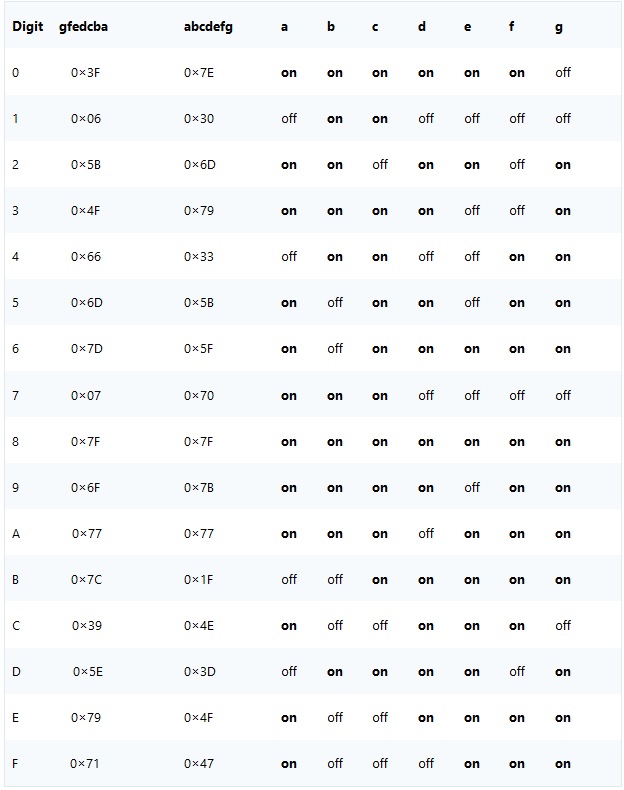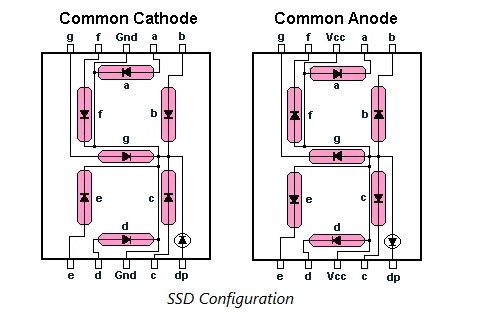Introduction–
A seven segment display is a set of seven bar-shaped LED (light-emitting diode) elements, arranged to form a squared-off figure 8. It’s also the most common, simple-to-use and cheap display.

Applications –
Seven segment are widely used in applications where digits[0-9] are required to be displayed.Although they also display letters A to F as shown in figure(2) simulation. This is a very simple and convenient way to display numbers in a bright fashion.
Form Factor–
- Sizes:They come in various sizes; 0.28”, 0.3”, 0.32”, 0.36”, 0.39”, 0.4”, 0.5”, 0.56”, 0.6”, 0.8”, 1.0”, 1.2”, 1.5”, 1.8”, 2.0”, 2.3”, 3.0”, 4.0”, 5.0”, 7.0”)
- Colors: and varied colors too; Red, Green, Yellow, Orange, Blue, and White.
Working –
Since these are basically LEDs arranged as a group they can either have anode in common or cathode thus they are named as Common-Anode/Common-Cathode displays.
The Seven-segment consists of 7 LEDs arranged in a way that allows constructing a display of the numbers of (0-9). It has 10 pins assigned as follows:

- Common Cathode: In this type of segments all the cathode terminals are made common and tied to GND. Thus the segments a to g needs a logic High signal(5v) in order to glow.This is shown in figure.

- Common Anode: In this type of segments all the anodes terminals are made common and tied to VCC(5v). Thus the segments a to g needs a logic LOW signal(GND) in order to glow.This is shown in figure.


Circuit diagram–

Program –
/*
Author-Dharmendra Kumar yadav
*/
#include <avr/io.h>
#include <util/delay.h>
#define LED_Direction DDRA /* define LED Direction */
#define LED_PORT PORTA /* define LED port */
int main(void)
{
LED_Direction |= 0xff; /* define LED port direction is output */
LED_PORT = 0xff;
char array[]={0xC0,0xF9,0xA4,0xB0,0x99,0x92,0x82,0xF8,0x80,0x90};
/* write hex value for CA display from 0 to 9 */
while(1)
{
for(int i=0;i<10;i++)
{
LED_PORT = array[i]; /* write data on to the LED port */
_delay_ms(1000); /* wait for 1 second */
}
}
}


Leave a comment